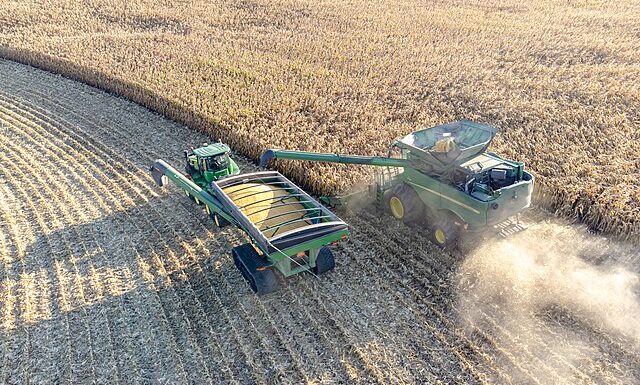The government of the United States was having a shutdown of key services starting October 1, 2025, testing payments at peak fall harvest.
Lapses in governmental funding preempt temporary closures of select services, including those by important agencies like the U.S. Department of Agriculture (USDA).
The USDA processes farmers’ harvest payments for crops it directly books from them, offers loans, and extends aid packages.
Payments the agency had recently partially processed included those for the second Emergency Commodity Assistance Program (ECAP), per the Sun Telegraph.
Lucky farmers had already partaken of $8 billion out of the $10-billion ECAP total, via the Farm Service Agency (FSA).
ECAP covers such issues as lack of planting due to disasters, high input expenditure and low federal produce prices.
For now, farmers still eligible to federal payments will have to cope with high tariff costs and low prices until the shutdown ends.
Slap on Crop Calendar
Agencies’ closures found corn in the early stages of its September-November harvest, with farmers expecting a bumper crop and consequential price drop.
The National Agricultural Statistics Service (NASS) on August 31 predicted the 2025-26 corn harvest area at 90 million hectares.
On the same date, the NASS reported 2025-26 corn production at 16.8 billion bushels, 9% more than 2024-25’s.
The last progress report on September 22 put the harvested area at 14%, a little ahead versus September 2024.
Another major fall crop is wheat, with reaping for the variety sown in the previous winter ending early August 2025.
The scything of spring wheat meanwhile ended as recently as late September, culminating in the Pacific Northwest states.
The soybean harvest on the other hand aligns with the corn timeline from late September through early November.
By September 22, farmers had gathered mature soy from 13% of the planted area, ahead of schedule vis-á-vis 2024.
Other fall crops currently enjoying harvests include rice (September-October), potatoes (August-October) and cotton (October-December).
Hence, a shutdown will affect crop farmers in arguably the most sensitive payment period of the federal farming calendar. To learn more on how the fall harvest in the United States fares in production terms, skim the following data.
United States 2025 Fall Crop Harvest Statistics
Between late summer and November, the 2025 fall harvest got rolling in the United States. For the crops that were over before September, wheat was the champ with production at 1.98 billion bushels, nearly 1% above 2024’s production. According to the National Agricultural Statistics Service (NASS), the 2025 wheat yield rate hit 53.3 bushels/acre, 4% up from 2024.
Corn and soybean harvests were only 13% and 14% over, respectively, by September 2025. However, 2025 preliminary production patterns were positively comparable to those of previous years. In 2023, for example, 387.8 million tonnes of corn were forecast for production while 367.9 million tonnes would go into domestic utility. The silver lining of this high production is the fact that the U.S. represents 32% of the worldwide corn output. Soybeans on the other hand are America’s number 1 trade crop, representing 14% of all farm exports. Production in 2023 started at an estimate of 122.7 million tonnes.
What was the ending U.S.’ grain stock from 2024 through 2025?
Based on the September 1, 2025 data by the NASS, wheat was the grain with the most stock at this date. Reserves were at 2.12 billion bushels or 6% up from 2024’s. A part of the stock included input from the recent harvest of 2025. Meanwhile, the soybean stock carryover from the previous season stood at 316 million bushels or 8% down from the September 2024 equivalent. The corn ending stock in September 2024 was over 1.6 billion bushels while the September 1, 2025 one was 13% down (1.53 billion bushels).
